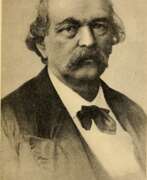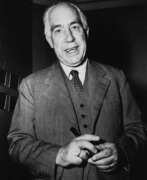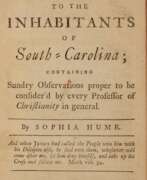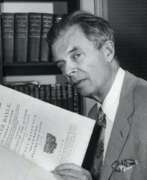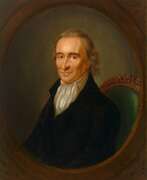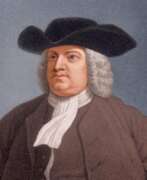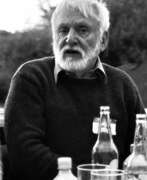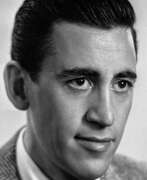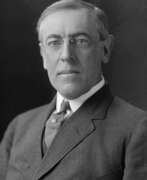Philosophers USA


Lewis David de Schweinitz (also Ludwig David von Schweinitz), born on February 13, 1780, in Bethlehem, Pennsylvania, was a German-American botanist and mycologist. His parents, Hans Christian Alexander and Dorothea Elizabeth von Watteville von Schweinitz, were instrumental in the administration of the Moravian Church in America. Following his early education in Bethlehem, Schweinitz was sent to Germany in 1798 to continue his academic pursuits.
In Germany, Schweinitz enrolled in the Moravian Theological Seminary at Niesky in Silesia. It was there that he met Professor Albertini, who shared his interest in botany. Schweinitz's focus on the study of fungi earned him the title "Father of North American Mycology." His contributions to the field were significant, as he was the first American to concentrate his botanical efforts specifically on fungi.
Among his many accomplishments, Schweinitz produced extensive mycological illustrations and published works on the subject. His manuscripts and watercolor paintings of fungi served as reference materials in the development of his Conspectus, a compendium of his findings and classifications. The impact of his work was so considerable that several taxa were named in his honor, highlighting his legacy in the world of botany and mycology.
Schweinitz passed away on February 8, 1834, but his legacy endures through his scientific contributions and the respect he garnered internationally as a botanist. His life and work continue to be celebrated and studied by those in the field, and his illustrations and findings remain a significant part of mycological history.
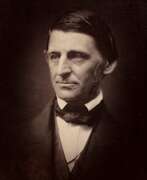

Ralph Waldo Emerson was an American philosopher, lecturer and poet, one of the most prominent thinkers and writers in the United States, and the originator of transcendentalism.
Ralph studied at Boston State Latin School and then at Harvard College (later Harvard University), began to preach, but soon doubted his chosen path and resigned his ministry. Emerson went to Europe, where new acquaintances and knowledge led him to new thoughts, and, returning to the United States in 1833, he began writing his famous book "Nature", where he first formulated a philosophy called transcendentalism. Soon other thinkers rallied around him, forming a group of like-minded thinkers.
In the essay "Nature," published in 1836, and in the following works, "The American Scholar" and "An Address in the School of Theology," Emerson consistently developed his ideas. Emerson's doctrine of the self-sufficiency and self-reliance of the individual stems from his view that a person need only look into his own heart to receive the spiritual guidance that has hitherto been the prerogative of the official churches. One must then have the courage to be oneself and trust the inner power within oneself, living one's life according to the commandments one has intuitively derived. These thoughts are not new, but Emerson put them in imaginative and accessible language.
Emerson's speeches led to his being ostracized at Harvard for many years. However, the informal Transcendental Club, founded in 1836, was joined and supported by his young students. The world fame of the brilliant thinker Emerson brought his "Essays" in two volumes, published in 1841 and 1844. As the main representative of transcendentalism, Emerson gave direction to the religious, philosophical and ethical movement, which above all emphasized belief in the spiritual potential of each person.
A later work of confession, The Conduct of Life (1860), demonstrates the author's developed humanism and full awareness of human limitations. The voluminous collection of poems cemented Emerson's reputation as a major American poet.
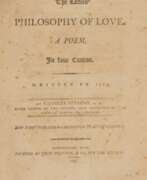

Charles Stearns was an American clergyman and doctor of philosophy.
Rev. Charles Stearns graduated from Harvard College and served the Congregational Church in Lincoln from late 1781 until his death. Several of his sermons were printed in the early 19th century.
In addition, Stearns was principal of the Liberal School, which opened in early 1793, a relatively progressive coeducational institution. While working at the school, Stearns wrote and published a number of works related to education, including Dramatic Dialogues for the Use of Schools (1798), a collection of thirty original plays that were performed by students.
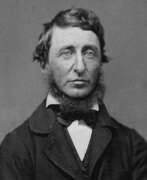

Henry David Thoreau is an American writer and poet, philosopher and publicist. He was a prominent representative of American transcendentalism, a friend and associate of Ralph Waldo Emerson.
Henry studied at Harvard University, where he met Ralph Waldo Emerson, the future founder of American Transcendentalism. Thoreau saw Emerson as a guide, a father and a friend. Under his guidance, Henry began to publish his poems and essays with increasing confidence.
In the early spring of 1845, the 27-year-old Thoreau began a new life: he chipped a cabin for himself on the shore of Walden Pond, ate very moderately and meditated. He also read and wrote "A Week on the Concord and Merrimack Rivers," then published in 1849. What eventually emerged was a series of 18 essays called "Walden," describing Thoreau's experimentation with the basics of life. Thoreau's clear and elegant style of presentation brought this work to the level of a literary classic.
Thoreau lived according to the doctrines of transcendentalism recorded in his masterpiece Walden (1854) for two years, and then left the cabin. But life around him had already changed, and little by little his moods began to change as well. Thoreau began to move away from transcendentalism, became more involved in public life, and became a committed abolitionist.
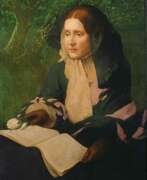

Julia Ward Howe is an American writer and poet, philosopher, abolitionist, and feminist.
Born into a well-to-do family and privately educated, Julia Ward married educator Samuel Gridley Howe and settled in Boston. She published her first collection of poems, Passionate Flowers, in 1854.Julia's early poems were praised by Hawthorne, Whittier, and Longfellow for their intellectual intensity. For a time Howe published the abolitionist newspaper Commonwealth with her husband. And in February 1862, The Atlantic Monthly published her poem "Battle Hymn of the Republic," which became the semi-official Civil War song of the Union Army, and Howe gained fame.
After the war, Howe began fighting for women's rights. In 1868, she was elected the first president of the New England Women's Suffrage Association. In 1868, she helped found the New England Woman's Club and became its president in 1871, the same year she became the first president of the American branch of the International Women's Peace Association. She was later active in the International Federation of Women's Clubs. Howe continued to write throughout her life, publishing travel books, poems, collections of essays, and biographies.
In 1870, she co-founded Woman's Journal and then served as its editor for 20 years. She traveled extensively until her advanced old age. In 1908, she became the first woman elected to the American Academy of Arts and Letters.
